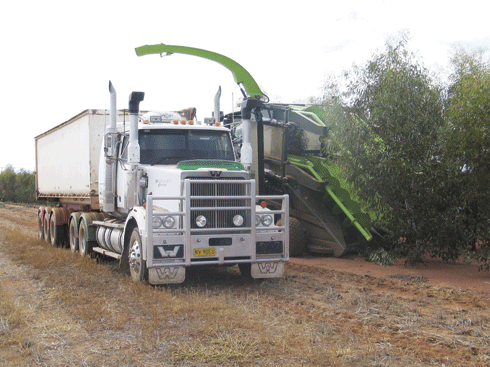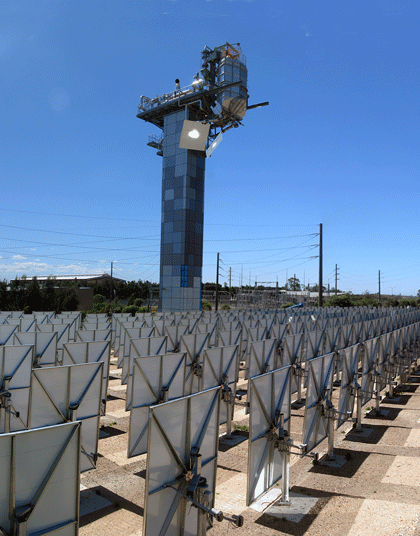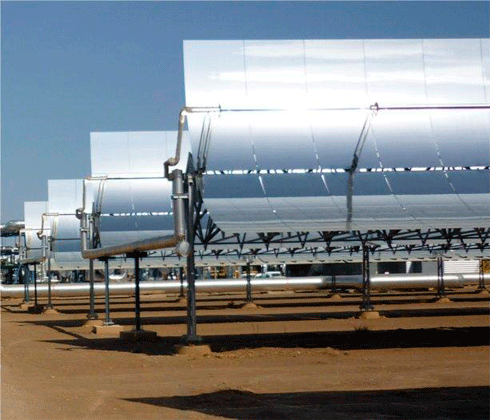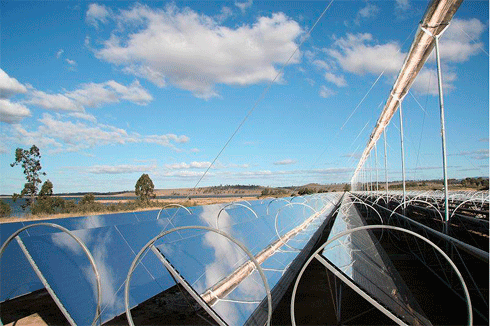
|
Published:
Growing a green fuel industry in Australia
Can Australia grow an economically and environmentally-sustainable biofuels industry on waste biomass? Joely Taylor investigates.
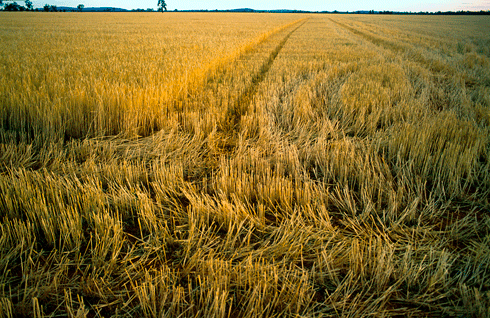
|
|
Feedstocks for lignocellulosic conversion to biofuels include agricultural residues, such as wheat stubble, and construction industry waste. Credit: CSIRO
|
With the potential to cushion Australia from the shock of fluctuations in oil prices and fossil fuel availability, a home-grown, waste-fed biofuels market is seen as an environmental opportunity, as well as an economic and fuel security issue. New, ‘second-generation’ biofuel production technologies developed around the world are being assessed for their technical and economic feasibility.
These second-generation technologies (see second box below) convert lignocellulosic1 biomass to a range of biofuels in many different ways. Three main conversion technologies are gasification, pyrolysis and hydrolysis (see second box below). The feedstock for this conversion includes agricultural residues such as wheat chaff and sugarcane bagasse, forestry residues and urban wastes diverted from landfill. One advantage of second-generation technologies is that non-food feedstock can be converted to biofuel, potentially reducing the competition for agricultural land.
Many of these second-generation conversion technologies are now reaching the commercial demonstration stage. This provides a chance to iron out any remaining technical issues and prove the processes in industrial mode. The main impediment to the successful commercial implementation of these technologies is the economy of scale. In other words, the challenge is to find the balance between the cost of the production process and the availability and cost of the required volume of biomass. Biofuels must be cost competitive with fossil fuels, because most consumer decisions are price-driven.
Does Australia have a competitive advantage in biofuel production?
For the past few years, scientists from CSIRO’s Energy Transformed flagship have been researching biomass production suited to second-generation conversion technologies, and current sustainability issues and economic scenarios. Their recent research findings give support to the view that it may be economically feasible to produce and use biofuels from available residue and waste streams in Australia.
CSIRO ecological economist, Dr Luis C Rodriguez, led a case study of the scenario of an ethanol plant situated in the Green Triangle – an area of approximately six million hectares in south-west Victoria and south-east South Australia. The study found that, given current oil prices and zero excise for ethanol, such a plant could be viable if the forest and crop residues cost at the plant gate were less than $74 per tonne.
‘The Green Triangle is one of the most promising Australian regions for biomass production,’ says Dr Rodriguez. The study region was selected for analysis due to its well-developed forest industry and level of grain production, as well as the availability of roads and infrastructure.
‘A focus of the study was to estimate the costs associated with each of the different residue streams, their competing uses and demand, and to link those feedstocks with geo-referenced information about their location and the transport distances and costs,’ explains Dr Rodriguez. ‘The study indicated that, under current economic conditions and policy, only about 20 per cent of the potential biomass produced in the region could be used for energy production in an economically viable way.’
The break-even point between feedstock price and the size of the biofuel plant can change depending on the assumptions around cost of excise and the cost of a barrel of oil. The cost of producing ethanol from biomass feedstock in the Green Triangle would be $0.64 per litre, with a pump price of $1.24 per litre after adjusting for energy content.
‘The different break-even prices and abundance of biomass for ethanol production in the Green Triangle region suggests that an ethanol industry could be viable under different combinations of fuel tax rates and oil prices,’ says Dr Rodriguez.
The implications of imported ethanol, which may have come from subsidised agriculture or processing plants, have not yet been studied.
Commercial biofuel use in Australia
Many studies and overseas commercial developments demonstrate that a larger biofuel industry could be economically viable in Australia. But according to the Biofuels Association of Australia, investment lags here for a number of reasons.
‘Industry feels that there has been very limited indication from successive governments as to a willingness to support the burgeoning industry,’ says Ms Heather Brodie, CEO of the association.
‘For many years, investment has stalled due to a lack of certainty around the federal government excise regime, and a lack of interest at a state level in mandating the use of the fuels or using other mechanisms to increase their uptake. Indeed, the fuel tax credit regime actually limits the use of biodiesel,’ she says.
However, change is in the air. ‘We have a number of oil majors participating and investing in the alternative fuels space,’ says Ms Brodie. ‘Even over the last 18 months we have seen a substantial shift in attitude with retailers, and I would expect that to increase at a rapid rate.’
Mr Andrew Lang, convenor of The Wood Energy Group and Chairman of the SMARTimbers cooperative, says that while there has been concern about using food-grade feedstock for first-generation biofuel production, countries have increasingly developed cost-competitive technologies for producing second-generation biofuels from wastes and residues.
‘Enerkem in Canada has developed a process to produce methanol and ethanol from gasified biomass wastes, beginning with old, treated power poles,’ says Mr Lang. ‘Their first plant has the capacity to produce five million litres of fuel per year. SunPine in Sweden has commenced production of biodiesel from crude tall oil, a by-product of the pulp and paper industry. Inbicon in Denmark is producing 5.5 million litres of ethanol from fermenting acid-treated straw per year.’
|
First-generation tech-nologies are generally already used commercially around the world. These include production of: |
ethanol from sugar and starch crops by fermentation and distillation |
biogas, such as methane, from anaerobic digestion of wet wastes |
biodiesel from waste oils and fats using transesterification. |
Second-generation technologies are still under development and not yet used widely for commercial biofuel production. They include the use of lignocellulosic plants as feedstock to manufacture ethanol, syngas, synthetic diesel, dimethyl ether and furans, as well as the production of algal lipids to convert to diesel. |
Second-generation technologies have been suggested as the answer to the pressure posed by first-generation technology feedstocks on agricultural land. First-generation feedstocks are generally food crops, such as wheat and corn, which are converted to a liquid fuel. In contrast, second-generation feedstocks include residues from agricultural and forestry production as well as urban organic wastes. |
Worldwide, the assumption that land-use changes associated with second-generation feedstocks will be neutral is being critically assessed. Biofuel users increasingly require assurance that no environmentally detrimental land-use change was associated with the growth or harvest of the biofuel feedstock, such as replacing agricultural land with plantation timber. National and international sustainability criteria are under development, and will include land-use change as an important part of biofuel sustainability assessment. |
Some biofuels are produced in Australia from the conversion of waste oil and tallow (abattoir waste animal fat) to biodiesel. Manildra, the country’s largest ethanol producer, produces biofuel using agricultural by-products. The company uses industrial-grade wheat flour to manufacture protein, using the leftover starch to manufacture ethanol. Ethanol is also made from the fermentation of C-molasses, a low value by-product of the sugar industry in Queensland and northern New South Wales.
Smorgon Fuels recently announced a venture with Biomax Fuels to produce biodiesel from non?food-grade mustard seed. Smorgon Fuels operates a 100 million-litre biodiesel plant in Victoria that primarily uses oils and animal fats.
In late 2010, Flex Ethanol Australia was founded by a consortium headed by GM Holden and Caltex to generate ethanol from household rubbish. So far, it has announced a feasibility study trialling Australian-style waste in the ethanol-making process at a Pennsylvanian facility owned by ethanol production specialist, Coskata.
Qantas has recently announced its support for a feasibility study on building a Fisher–Tropsch plant in Sydney with Solena, a United States fuel technology company. Qantas is a member of the Sustainable Aviation Fuel Users Group, an international collaboration of aviation fuel users, engine manufacturers and fuel manufacturers.
Gasification |
In gasification, biomass is converted to gas using very high temperatures in a low-oxygen atmosphere. The resulting gas (syngas) can be converted to alcohols such as ethanol for ethanol?based fuels, or alkanes (synfuels or syndiesel) chemically similar to current petroleum-based transport fuels. The Fischer–Tropsch method is used for the latter: a series of chemical reactions to produce a diesel substitute. |
Where the feedstock is woody biomass, gasification has an advantage over hydrolysis because gasification converts all the carbon compounds to syngas, including lignin, which is a serious impediment in the hydrolysis process. Depending on the pathway, the Fischer–Tropsch process does not convert all the gas to liquid and the uncoverted non-liquid portion can be used for cogeneration of electricity to power the gasification plant and export renewable electricity to the grid. |
Existing commercial biomass gasification projects are producing heat and electricity rather than transport fuels. Existing fuel-producing plants use natural gas or coal as feedstock, rather than biomass: it is much easier to move natural gas and feed it on a continuous basis to a gasifier than to handle biomass as feedstock, particularly woody (lignocellulosic) biomass. |
Pyrolysis |
Pyrolysis is the heating of lignocellulose to 450–500°C in the absence of oxygen. The feedstock cannot burn without oxygen and instead is broken down to produce a pyrolysis oil, a char (the solid material that remains after light gases have been driven out or released from the feedstock during the pyrolysis), and a combustible gas mixture. The gas can be used for cogeneration, helping to generate heat for the pyrolysis process or electricity. The char can be used as a ‘biochar’ fertiliser, for renewable energy or to reduce greenhouse gas emissions from the metallurgical industries. |
Several overseas companies produce a stable pyrolysis oil, suitable for use in boilers or even for the production of electricity in a gas turbine. One such company is Canada’s Dynamotive Energy Systems, which also produces biochar. More recently, an upgraded pyrolysis oil has been developed that could act as a ‘drop in’ fuel for blending with, or replacing, diesel, petrol and jet fuel. |
Pyrolysis oil can also be gasified in a similar manner to the raw biomass to produce a syngas for further processing. However, this adds a production step, thereby increasing the cost. |
Hydrolysis (bioconversion) |
Hydrolysis is the breaking up of the cellulose and hemicellulose components of lignocellulosic biomass into individual sugars. The sugars are converted into ethanol by microorganisms in the process of fermentation. Bioconversion encompasses both hydrolysis of the cellulosic components of lignocellulose to sugars and the fermentation of the sugars to ethanol or butanol. |
The hydrolysis of cellulose and hemicellulose to sugars can be achieved by chemical means, using dilute or concentrated acid, or by biological means, using a mixture of enzymes known collectively as cellulases. |
‘Cellulases are naturally occurring enzymes that have evolved in organisms such as wood rot fungi and the protozoa found in the guts of termites,’ says Dr Victoria Haritos from the CSIRO’s Energy Transformed Flagship. ‘We have unearthed several new cellulase enzymes from novel Australian organisms that show some promise for increased efficiency of conversion.’ |
How much biofuel could Australia produce?
Another recent study conducted by CSIRO’s Energy Transformed flagship aims to find out how much biofuel Australia could produce. Project leader, Dr Deborah O’Connell, says that a biofuel’s sustainability may vary depending on its type and how much feedstock is used, the technology for conversion of the feedstock and its region of origin.
The project team first uses data and models to assess the biomass produced in Australia. Then, they apply a series of constraints to the data to make assumptions about the fraction of biomass that would be available for a second-generation biofuel industry. The constraints assess the technical, environmental and economic feasibility of each biomass type. By removing variability from the results, the available amount of biomass is also reduced in each scenario. This gives greater confidence in the results, reducing risk to biofuel industry investors.
‘We have identified that we have significant biomass for current production in Australia, and that we could produce more in a way sympathetic to current land use,’ says Dr O’Connell. ‘Analysis done by CSIRO shows that through both modified use of current sources of biomass and use of new sources of biomass over the next 20 years, the biofuels industry in Australia could be scaled up.’
The Future Farm Industries Cooperative Research Centre (CRC) is researching the potential for new sources of biomass grown in harmony with existing farming. The CRC is leading work on the growth and harvesting of mallee eucalypt trees, which are grown by more than 1000 Western Australian farmers on part of their farms for environmental benefits. The trees coppice (resprout) and could be harvested regularly to provide a sustainable source of biomass to biofuel plants. In a few years, farmers across Australia may be in a win–win situation, planting trees for both environmental and commercial benefits alongside their cereal and livestock operations.
Dr Joely Taylor works in the Sustainable Biomass Production Project in CSIRO’s Ecosystem Sciences Division. Colin Stucley, who helped write and research this story, is Managing Director of Renewable Oil Corporation and a member of the management committee for Bioenergy Australia, the country’s peak national body for bioenergy research, development and implementation.
More information
Farine DR et al. An assessment of biomass for bioelectricity and biofuel and for greenhouse gas emission reduction in Australia. Global Change Biology (submitted).
Fritsche UR and Wiegmann K (2011). Indirect land use change and biofuels. European Parliament, Brussels.
Rodriguez L et al (2011). Biofuel excision and the viability of ethanol production in the Green Triangle, Australia. Energy Policy, 39, 1451.
Stucley CR et al (2004). Biomass energy production in Australia. Rural Industries Research and Development Corporation (RIRDC) Publication No. 04/031. RIRDC, Canberra.
Warden AC and Haritos VS (2008). Future biofuels for Australia: issues and opportunities for conversion of second-generation lignocellulosics. RIRDC Publication No 08/117. RIRDC, Canberra.
1 Lignocellulose is comprised of three main components: cellulose, hemicellulose and lignin. Cellulose is made of chains of glucose, a six-carbon sugar, that are tightly bound together as fibres (fibrils). Hemicellulose, composed primarily of five-carbon sugars, surrounds the fibrils of cellulose. Lignin is a complex material built from aromatic organic molecules. It binds or cements the cellulose fibrils together, forming a protective sheath around them.


